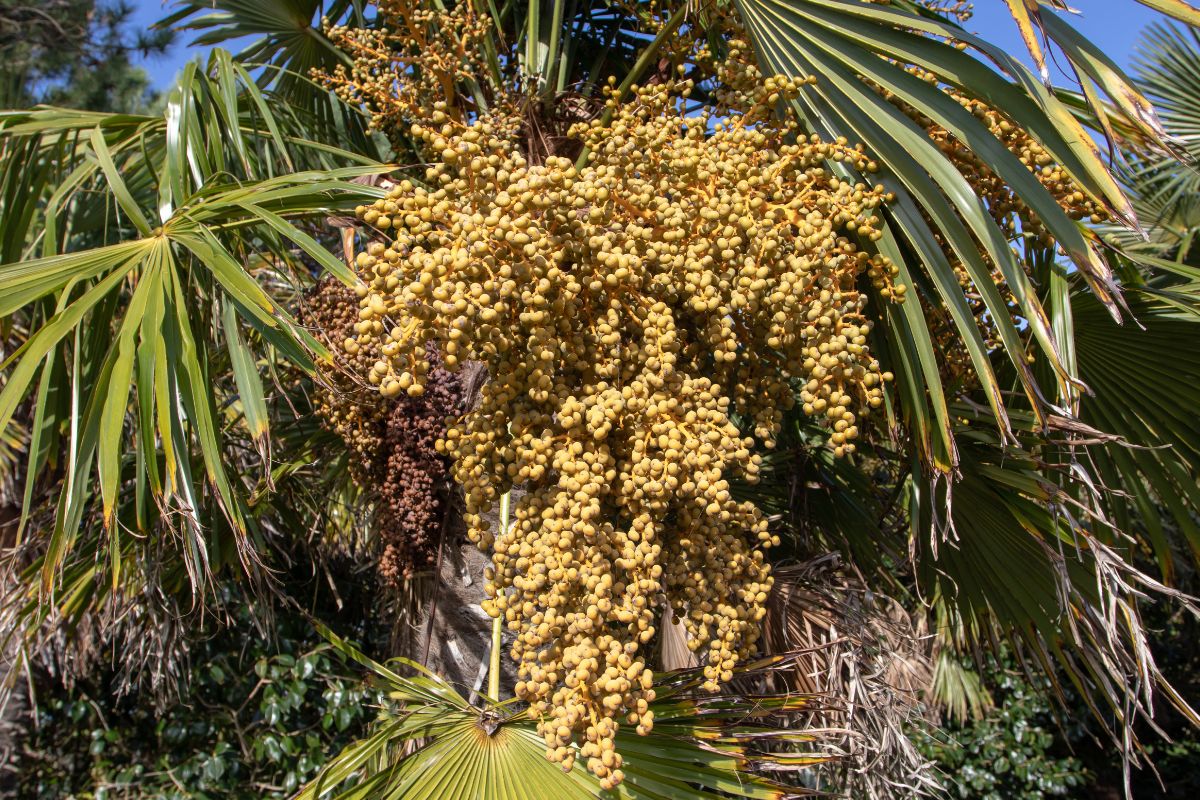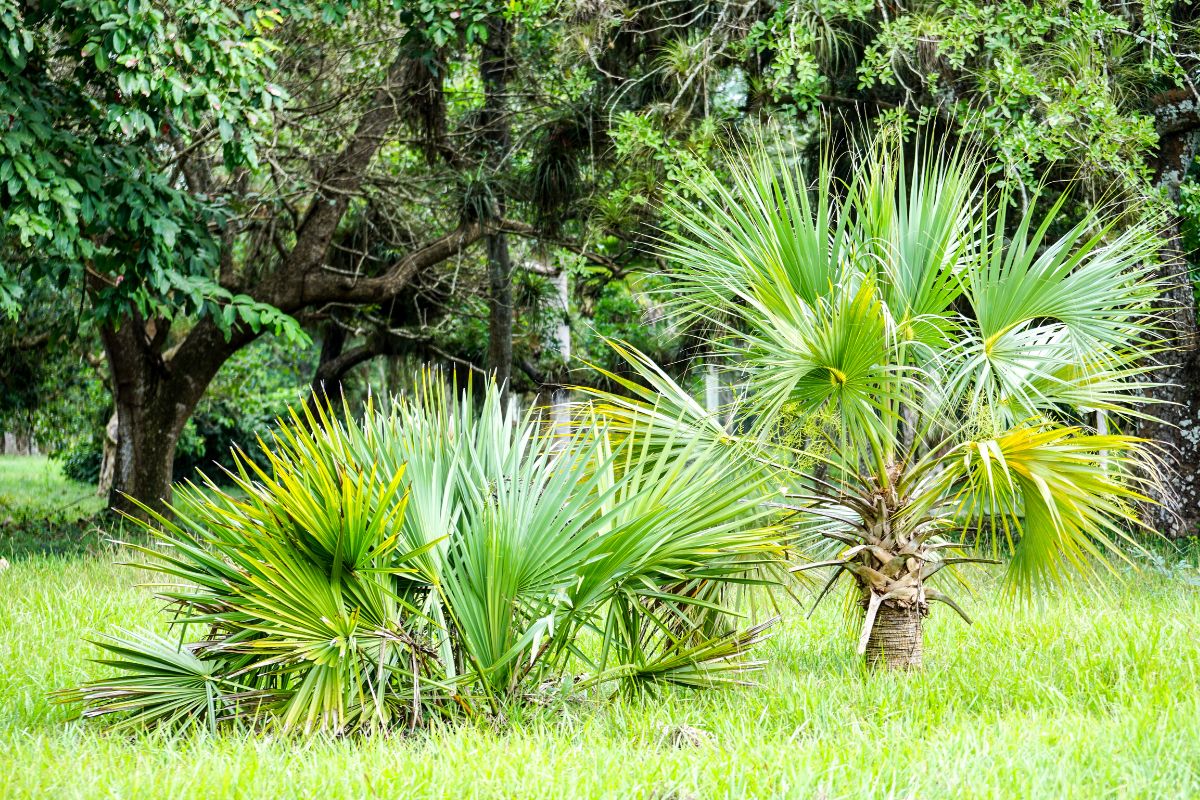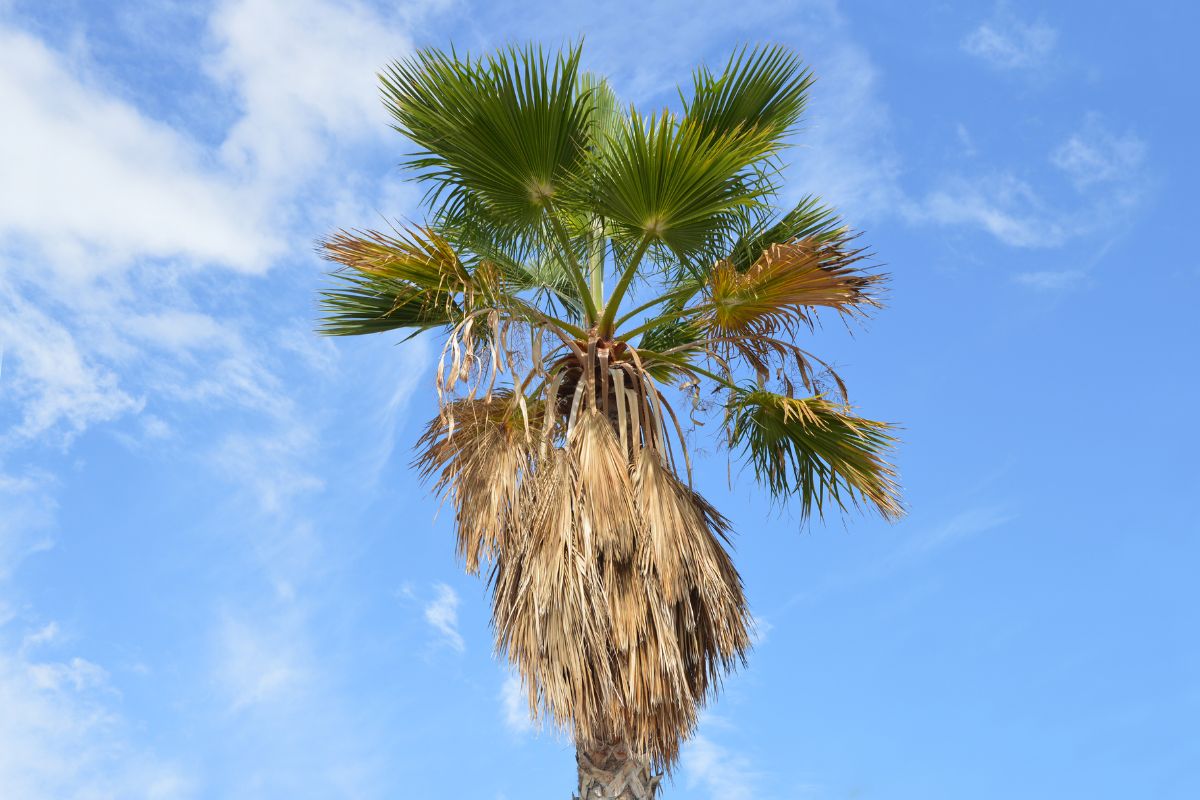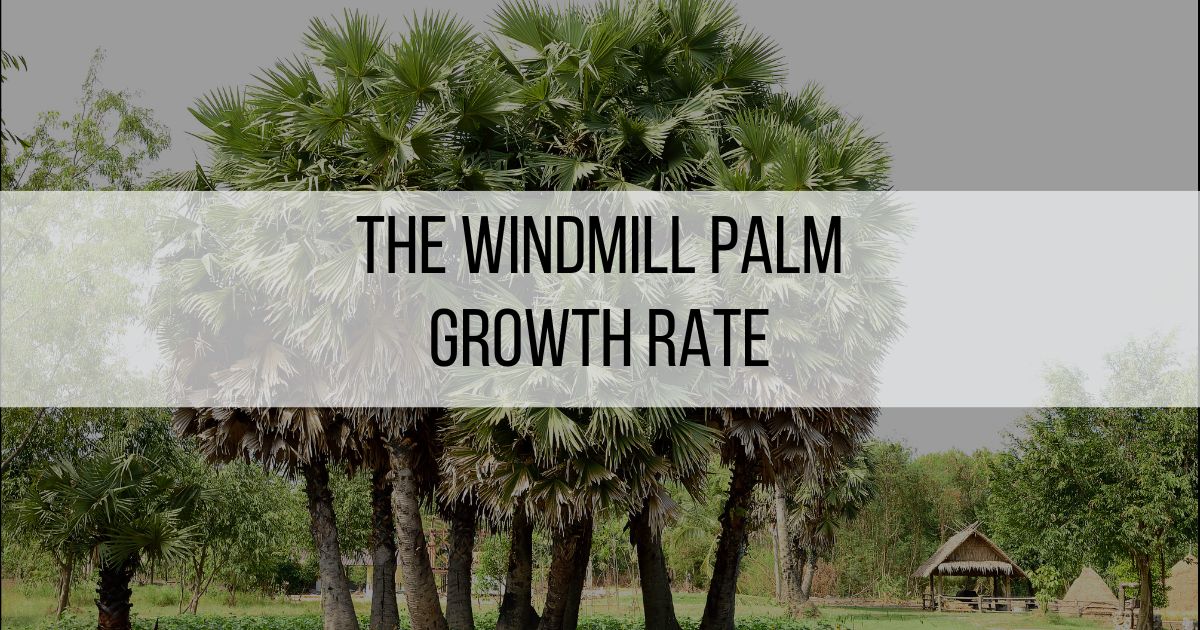What is a Windmill Palm?
One of the toughest palm trees available, the windmill palm enables you to bring a tropical feel to your temperate environment. The windmill palm’s growth rate is average. It is one of the few palms that can withstand sub-freezing conditions (down to 10 degrees Fahrenheit (-12.22 degrees Celsius).
This evergreen palm tree can flourish as far north as the Pacific Northwest on the West Coast or New York State on the East Coast.

The Windmill Palm Tree’s Scientific Name
This palm tree is a member of the Arecaceae (palm) family, and its botanical name is Trachycarpus fortunei. This species’ name honors the Scottish gardener Robert Fortune.
The 3-foot (0.91 meters) long, fan-shaped leaves of the windmill palm give the tree its name. The fibers produced by the leaf shafts, which wrap the trunk, can make ropes, mats, brushes, brooms, and even hats. The leaves are occasionally utilized in thatched roofs as well. You can plant your windmill palm during spring.
Their Growth Rate
The Windmill palm grows 6 to 12 inches (15.24 to 30.48 centimeters) yearly, which is a moderate to quick rate. The total height range is 15 to 30 feet (4.57 to 9.14 meters) or more.
Where to Find Windmill Palm Trees for Sale
You can find windmill palm trees for sale from Amazon or reputable tree nurseries around you.
Are Windmill Palms Cold Hardy?
Based on the worst minimum temperatures during the winter, the USDA Hardiness Zones show the areas where plants can thrive. Throughout the West Coast, Gulf Coast, and up the East Coast as far as Virginia, windmill palm trees flourish in Zones 7 through 11.
Windmill palms height can add 2 to 3 feet (0.60 to 0.91 meters) of new growth each year when grown under ideal conditions. You cannot speed up the palm’s natural growth pace, but growing it in its optimum environment results in the best growth. Any plant that grows under unfavorable circumstances will develop slowly and become weak.
Windmill palms should grow in full sun to partial shade, with the understanding that partial shade encourages the most robust development. Rich in organic matter, well-draining soils are ideal for the palm. Avoid planting windmill palms in wet areas that retain water since these conditions encourage diseases like root rot, which can be fatal to the palm.
Areas with poor drainage and full shade adversely impact the windmill palm growth rate. It grows effectively when you plant it in big containers because of its small size. Use a fertile, well-draining potting mix, and make sure the container has bottom drain holes.
Slow-release fertilizers commonly used in potting mixes reduce the palm’s need for fertilizer. When the nutrients in the potting mix are low, you’ll need to start administering fertilizer, so check the label to see how long the slow-release fertilizer lasts.

Our Windmill Palm Care Guide
With weekly waterings during the growing season, windmill palms can tolerate modest amounts of drought. During the winter, when active development slows, you can reduce your frequency to every two weeks or so.
Only cut-off fronds that are fully brown since those with some color still feed the palm with nutrition. Spread a palm tree fertilizer under the canopy of the windmill palm in the spring and water it into the ground.
Because of their compact size, these palms are perfect for framing entryways and adding a tropical touch to porches, patios, and larger balconies. Additionally, they form striking examples and accent plants.
Windmill palms serve as pool plants and bring year-round beauty to winter landscapes. Even people in colder climates can use the potted palm to spruce up outside areas and get them to a sunny spot in the winter. Anywhere you choose to have it, the palm is a beautiful addition.
Windmill palms are not particular about their soil. They enjoy the shade and can survive temperatures as low as 10 degrees Fahrenheit (-12.22 degrees Celsius).
Sun and Shade
Windmill palm plants prefer shade over much sunlight. Please place them in a spot with some shade so they may get two to four hours of direct sunlight each day.
Soil
Although windmill palm trees may thrive in various soil types, they favor porous, moist, fertile, and well-drained soil.
Watering
When planting, windmill palms need a lot of water to develop a strong root system. For the first three months, water them every two to three days. After that, save them during the summer, and water them only once a week. You might need to water them twice a week if the weather is regularly hot or dry.
The soil should always be wet but never drenched. By pressing your index finger 2 to 3 inches (5.08 to 7.62 centimeters) into the surrounding soil, you may determine when to water. Water is necessary if the soil seems dry.
Fertilizing
Fertile soil is necessary for windmill palms to grow. Once or twice during the growing season, fertilize palm trees using a slow-release fertilizer made specifically for them. Do this in the spring before new growth appears and then again in the summer or fall.
Pruning
Windmill palm trees don’t need pruning besides removing dead, ill, or broken branches. As soon as you see those, you should prune them.
Other Windmill Palm Tree Features
Evergreen in nature, windmill palms can reach heights of 20 to 40 feet (6.09 to 12.19 meters) and have a canopy spread of about 12 feet (3.65 meters). However, those raised in its coolest region only reach about 10 feet (3.04 meters).
Windmill palms can be successfully grown by many people who reside in climates that are normally too cold for most palm species. They are among the hardiest palm plants, typically surviving winter lows of 10 degrees Fahrenheit (-12.22 degrees Celsius).
However, zone 7 residents should plant in a protected location shielded from chilly winter winds and cover the roots with a thick layer of mulch.
Reader FAQs on Windmill Palms
How Tall Do They Grow?
Although they can reach heights of up to 40 feet (12.1 meters), most are in the 10 to 20-foot (3.04 to 6.09 meters) range.
How Can I Make a Windmill Palm Grow Faster?
Windmill palms (Trachycarpus fortunei, USDA plant hardiness zones 7 through 11) are the ideal addition to smaller landscapes seeking a tropical feel due to their compact size.
This palm, native to central and eastern China, is resilient, but the conditions and care it receives throughout its growth impact its health, affecting how quickly it grows. When cultivated in ideal conditions, windmill palms naturally develop new growth at a moderate rate of speed.
How Fast Do They Grow?
Less than 8 inches (20.32 centimeters) add to the height of a windmill palm per year.
Do Windmill Palms Need Full Sun?
In general, windmill palm plants prefer some shade over direct sunlight.
Do Windmill Palms Need Fertilization?
You can use a slow-release fertilizer made especially for palm plants.

Summary
Since the windmill palm tree tolerates salt, it thrives in coastal areas. Although the containers must have suitable drainage holes, it is a decent option. Windmill palms are ideal for shady patios in outdoor settings.
